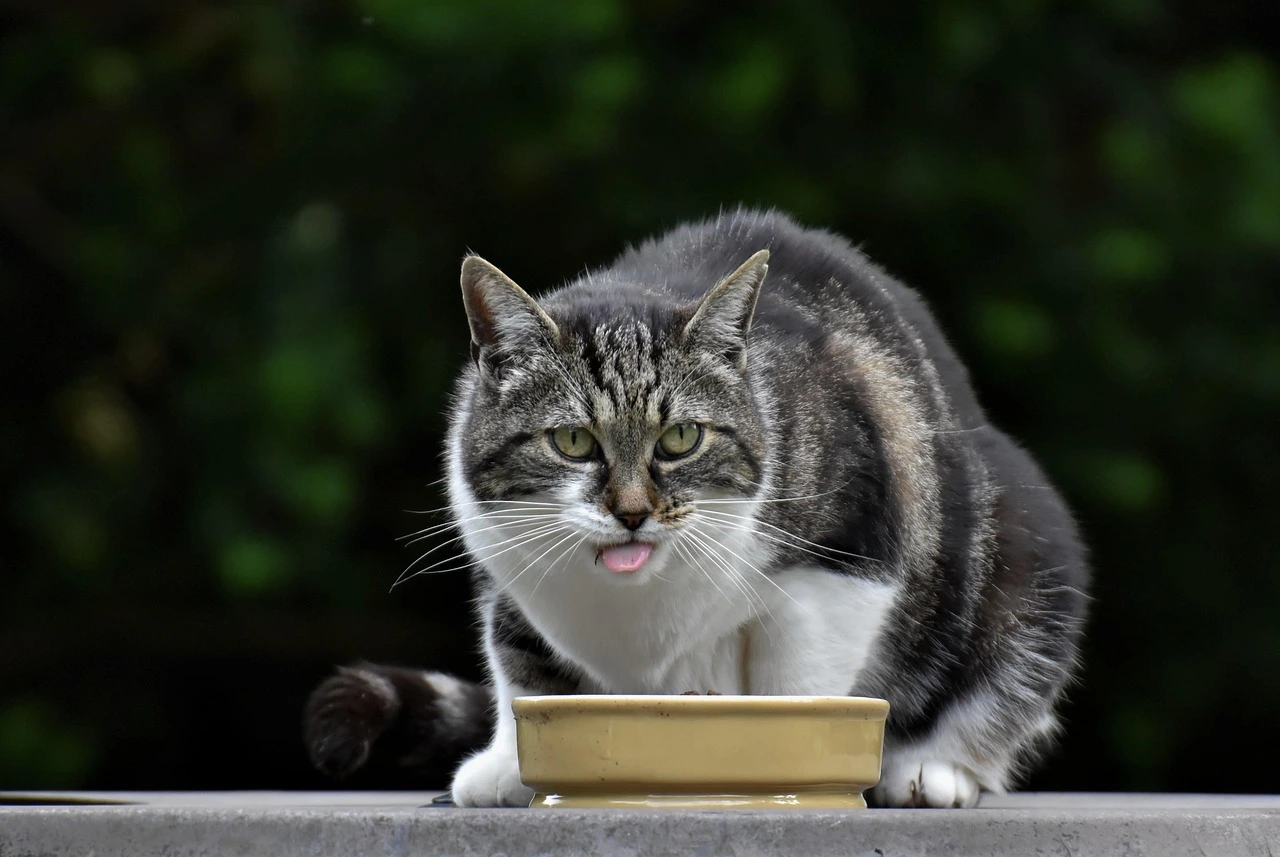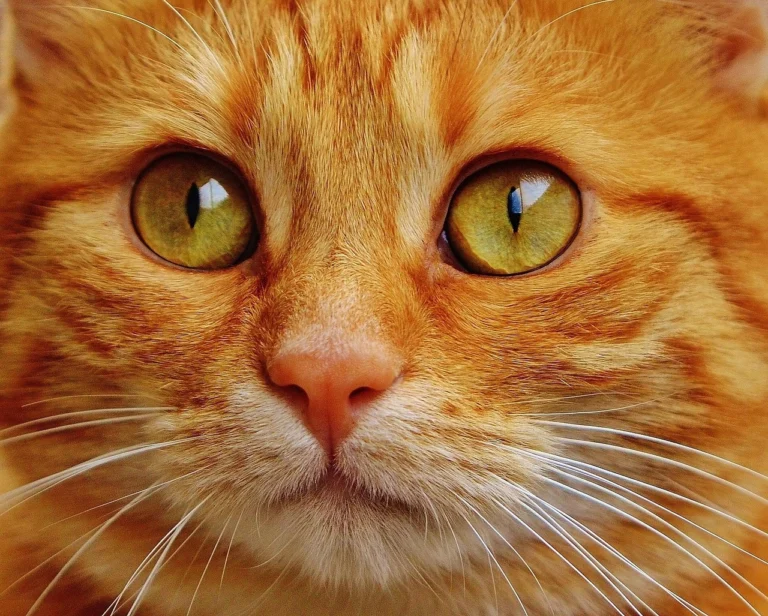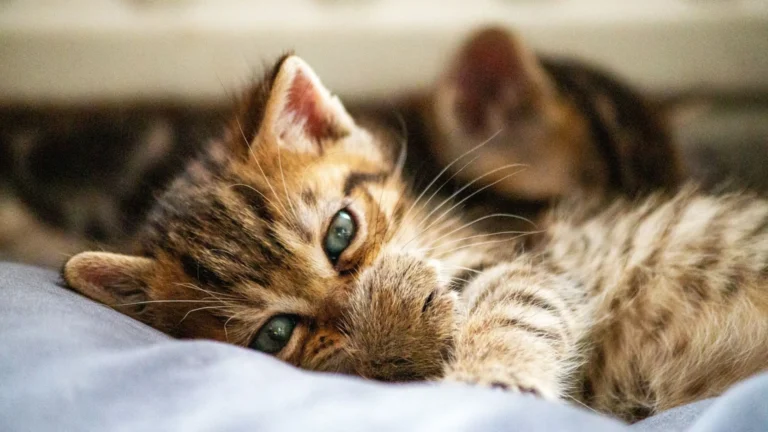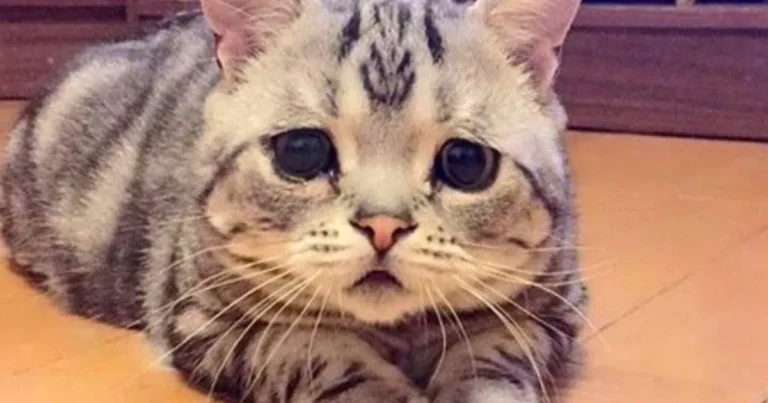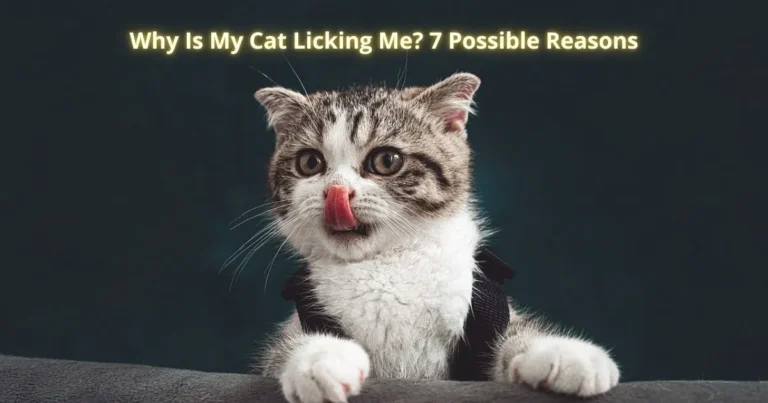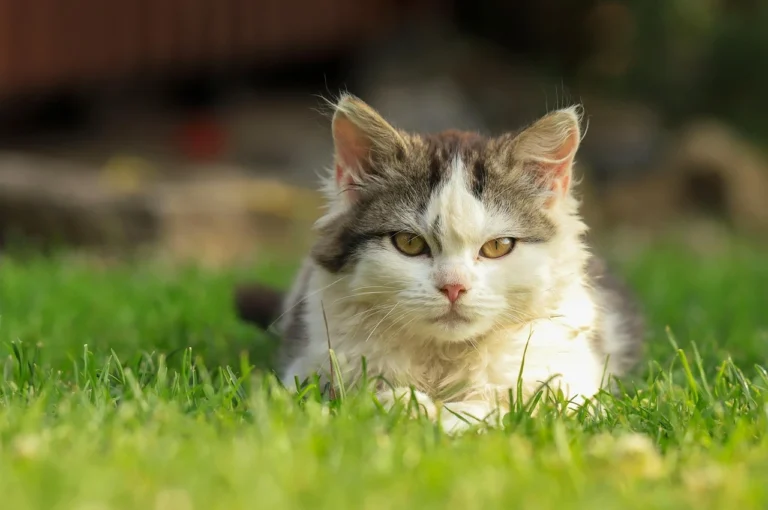Can Cats Eat Peanut Butter? Powerful Safety Guide
Every cat owner knows the moment when their curious feline starts eyeing a human snack, hoping for a tiny taste. Sharing may feel harmless, but it’s important to understand how certain foods—like Peanut Butter or other spreads—can affect your cat’s health.
Some treats might look safe, yet they don’t always match a cat’s nutritional needs. Cats rely on very specific nutrients, and offering the wrong kind of human food can lead to digestive discomfort or preventable health issues.
Your pet thrives on a balanced diet tailored to its unique requirements. Before offering a spoonful of Peanut Butter or any other human snack, it’s worth learning about the possible limitations and risks.
This guide covers everything you need to know about giving your cat human treats, focusing on nutrition, potential dangers, and safer alternatives—so you can make confident, informed choices for your feline’s well-being.
Table of Contents
Understanding the Safety of Peanut Butter for Cats
Sharing peanut butter with cats needs careful thought. Many cat owners might want to share this tasty spread. But, knowing the risks is key for your pet’s health.
Cats have special dietary needs that are different from ours. Their digestive systems can’t handle some human foods. This makes peanut butter a risky treat for them.
Potential Dangers in Peanut Butter
There are several reasons why peanut butter is risky for cats:
- It has a lot of fat, which can cause weight gain
- It can cause cat food allergies because of nut proteins
- Its thick, sticky texture can cause choking
- Some peanut butters have toxic additives like xylitol
Natural vs. Processed Peanut Butter
Not all peanut butters are the same. Natural peanut butter without added sugars or artificial sweeteners might be safer. But, processed versions often have harmful ingredients that can harm your cat’s health.
Safety Considerations for Cat Owners
Before giving your cat new food, talk to a vet. They can give advice on peanut butter for cats and help with allergies.
Always put your cat’s nutritional needs and safety first, not human treats.
Can Cat Have Peanut Butter: The Truth About Feline Consumption
Before giving peanut butter to cats, we must think about their special diet needs. Cats might like the taste, but vets say no to regular treats. Keeping your cat healthy means following their diet rules.
Cats need to eat mainly animal protein because their bodies are built for it. Peanut butter doesn’t give cats much good and can harm their health. So, it’s important to know the risks before giving it to them.
- Lacks essential nutrients for cats
- High fat content can lead to weight gain
- Potential choking hazard
- Risk of digestive issues
Cats’ digestive systems are different from ours. The thick, sticky peanut butter can be hard for them to swallow or digest. This might cause:
| Potential Issue | Possible Consequences |
|---|---|
| Digestive Blockage | Difficulty in swallowing or digesting |
| Allergic Reactions | Skin irritation or gaStrointestinal distress |
| Nutritional Imbalance | Disruption of balanced diet |
If you want to treat your cat, talk to a vet. They can suggest safe treats that fit your cat’s diet and are good for them.
Professional veterinarians recommend prioritizing species-appropriate nutrition for optimal feline health.
Nutritional Impact of Peanut Butter on Cats
Knowing what’s in peanut butter is key when thinking about giving it to your cat. Experts say cats need special food because they’re different from other animals.
Cats must eat animal proteins because their bodies are made for it. But peanut butter, though it has protein, isn’t what cats should eat.
Protein and Fat Content Analysis
Here’s what’s in peanut butter for cats:
- Protein source: Plant-based proteins that are hard for cats to digest
- Fat content: Very high, with about 16 grams of fat in 2 tablespoons
- Caloric density: Around 190-200 calories in 2 tablespoons
Comparison with Cats’ Natural Dietary Needs
Cats need animal-based proteins for amino acids. Peanut butter can’t give them the meat proteins they need for muscles and health.
Caloric Considerations for Feline Health
Peanut butter has a lot of calories, which can make cats gain weight. Adult cats only need 200-300 calories a day. So, peanut butter is a bad choice for treats.
“Moderation is key when introducing any human food to your cat’s diet.” – Veterinary Nutrition Specialists
Always talk to a vet before adding new foods to your cat’s diet. Cat nutrition is complex and depends on the cat’s needs.
Hidden Dangers: Xylitol and Other Toxic Ingredients
Peanut butter might seem harmless, but it can be risky for cats. Xylitol dangers for cats are especially concerning. It’s important to know which foods are toxic before giving your cat treats.
Xylitol is a sweetener found in many foods. It’s very dangerous for cats. When cats eat it, it can cause their blood sugar to drop quickly. This can lead to serious health problems, even death.
- Xylitol can cause blood sugar drops within 10-15 minutes of ingestion
- Potential symptoms include weakness, seizures, and liver failure
- Cats are more sensitive to xylitol than dogs
Other ingredients in peanut butter can also harm your cat. Things like preservatives, additives, and salt can upset their stomach or cause long-term health issues. Always check ingredient labels carefully before giving your cat human food.
Prevention is always better than treatment when it comes to your cat’s nutrition.
When choosing peanut butter or treats, think about your cat’s safety first. Opt for natural, xylitol-free options with few ingredients. This is the safest way to give your cat treats now and then.
Signs of Peanut Butter Intolerance in Cats
Feeding cats human food like peanut butter can sometimes trigger unexpected health reactions. While many cats might seem curious about this treat, some can experience serious cat food allergies or intolerance symptoms that require immediate attention.
Common Digestive Issues
When cats consume peanut butter, they might develop digestive complications that signal potential problems:
- Persistent vomiting after consumption
- Unexpected diarrhea
- Reduced appetite
- Stomach discomfort or bloating
Allergic Reactions to Watch For
Cat food allergies related to peanut butter can manifest through various symptoms:
- Skin irritation or sudden itching
- Excessive grooming
- Swelling around mouth or face
- Respiratory difficulties
When to Seek Veterinary Care
Recognizing serious symptoms is crucial when feeding cats human food. Seek immediate veterinary assistance if you observe:
- Difficulty breathing
- Continuous vomiting
- Significant behavioral changes
- Signs of extreme distress
Always prioritize your cat’s health and consult professionals when uncertain about potential allergic reactions or intolerance symptoms.
The Risk of Choking and Digestive Blockages

Feeding cats human food like peanut butter can be risky. It can cause choking and digestive blockages. The thick, sticky peanut butter is a big challenge for cats.
It’s important to know the risks of giving cats treats like peanut butter. The dense texture can get stuck in a cat’s throat. This is a big choking hazard. Cats have smaller mouths and narrower airways than humans or dogs, making them more at risk.
- Peanut butter’s sticky nature can:
- Block airways quickly
- Create difficulty swallowing
- Potentially cause severe respiratory distress
Digestive blockages are another big worry with human food for cats. The thick peanut butter can get stuck in a cat’s digestive tract. This can lead to:
- Intestinal obstruction
- Severe gagging
- Potential surgical intervention
Veterinarians strongly recommend avoiding peanut butter as a treat for cats due to these significant health risks. Always think about your cat’s safety when introducing new foods.
Impact on Cats with Existing Health Conditions
When thinking about adding peanut butter to your cat’s diet, it’s important to consider their health. Some health issues make peanut butter dangerous for cats.
Diabetes Management Challenges
Cats with diabetes need to be careful about what they eat. Peanut butter’s high fat and calories can mess with their blood sugar. Your vet might say no to peanut butter because of its bad effects on their diet.
- High sugar content can spike insulin levels
- Excess fat may complicate weight management
- Caloric density can interfere with strict dietary controls
Kidney Disease Nutritional Concerns
Cats with kidney disease also face problems with peanut butter. The phosphorus in it can harm their kidneys more. It’s key to follow strict diet rules for these cats.
- Phosphorus levels can accelerate kidney damage
- High protein content may stress kidney function
- Limited nutritional benefits for kidney-compromised cats
Always talk to your vet before adding new foods to a cat with health issues.
Safe Alternatives to Peanut Butter for Cats
Looking for safe treats for your cat? Experts suggest many healthy options that are tasty and good for your pet. While peanut butter isn’t the best choice, there are many other treats that can make your cat happy and healthy.
- Small pieces of cooked chicken or turkey
- Specially formulated commercial cat treats
- Freeze-dried meat snacks
- Nutritional supplements designed for cats
Protein-rich treats are the best choice. Cats are obligate carnivores, needing lots of animal protein. Commercial cat treats are made to give your pet the right nutrition for their health.
| Treat Type | Protein Content | Nutritional Benefits |
|---|---|---|
| Cooked Chicken Pieces | High | Lean protein, muscle support |
| Freeze-Dried Meat | Very High | Concentrated nutrients, low moisture |
| Commercial Cat Treats | Moderate to High | Balanced nutrition, dental health |
“Always consult with your veterinarian before introducing new treats into your cat’s diet.” – Veterinary Nutrition Association
Choose treats that go well with your cat’s regular food. Look for ones with few additives and lots of protein. Remember, it’s important to not overdo it to keep your cat healthy and prevent weight gain.
Proper Portion Sizes and Frequency Guidelines
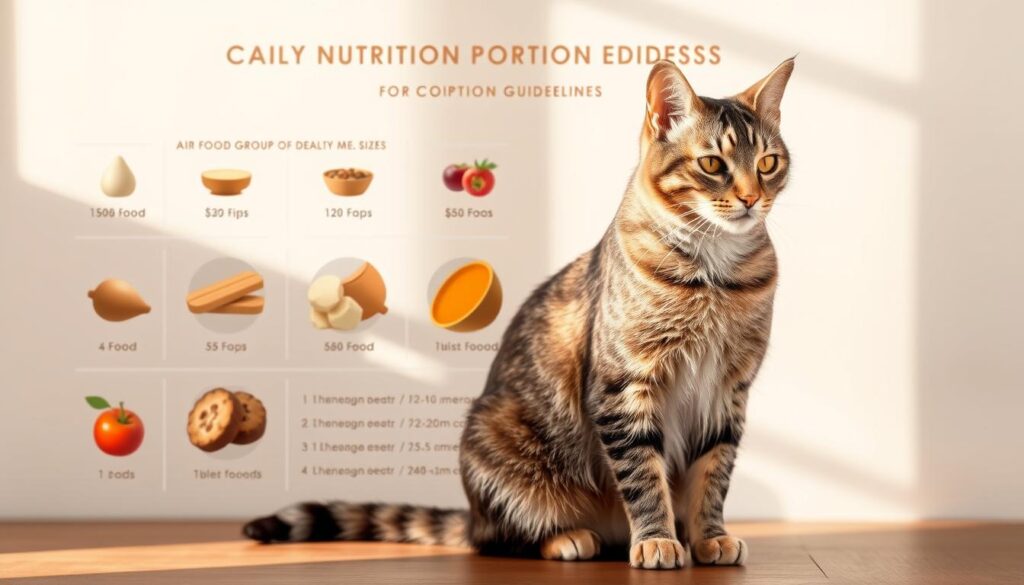
Feeding cats human food like peanut butter needs careful thought. Experts say cats should only have a little peanut butter to avoid health problems.
It’s important to feed peanut butter in small amounts. Vets recommend the following:
- Maximum portion: Less than 1/4 teaspoon
- Frequency: No more than once per week
- Serving method: Small, infrequent treat
Cats digest food differently than humans. Their diet needs are unique. Peanut butter should not be a main part of their food.
Before giving your cat human food, think about these things:
- Consult with your veterinarian
- Check ingredient labels carefully
- Watch for potential allergic reactions
- Monitor your cat’s overall health
Remember, treats should make up no more than 10% of your cat’s daily calories. Choosing the right food keeps your cat healthy and joyful.
How to Check Peanut Butter Ingredients for Safety
Keeping your cat safe means reading labels carefully. Peanut butter might look safe, but some ingredients can be harmful.
Knowing what to look for on peanut butter labels is key. It helps avoid health problems. Xylitol dangers for cats are especially important to spot.
Decoding Ingredient Lists
When checking peanut butter labels, pay attention to these:
- Artificial sweeteners
- Salt content
- Added sugars
- Preservative chemicals
Red Flag Ingredients to Avoid
Some ingredients are very dangerous for cats. Be careful of:
| Ingredient | Potential Risk |
|---|---|
| Xylitol | Severe toxic reaction, potential insulin drop |
| High sodium | Kidney stress and dehydration |
| Artificial preservatives | Potential long-term health issues |
Choose natural, minimal-ingredient peanut butter for your cat. Your vet can help pick safe treats.
Emergency Response to Peanut Butter Incidents
When your cat eats toxic foods like peanut butter with xylitol, act fast. Quick action can save your cat’s life. It can prevent serious health problems.
If you think your cat ate peanut butter with xylitol or shows bad signs, here’s what to do:
- Stay calm and watch your cat’s signs
- Don’t make your cat vomit without a vet’s say-so
- Call your vet right away
- Save the peanut butter packaging to check the ingredients
Xylitol is very dangerous for cats. Look out for these signs:
- Sudden weakness or feeling very tired
- Vomiting
- Not being able to move well
- Having seizures
Getting help from a vet is key. They might suggest:
| Potential Treatment | Purpose |
|---|---|
| Blood glucose monitoring | Check for insulin response |
| IV fluid therapy | Keep your cat hydrated and help with metabolism |
| Liver function tests | See if there’s damage from the toxin |
Remember: Time is critical when addressing potential toxic food incidents in cats.
Conclusion
When thinking about whether cats can have peanut butter, be careful. Is peanut butter safe for cats? It’s not a simple yes or no. While a little might not hurt right away, the dangers are greater than any benefits for your cat.
Your cat needs a diet that’s just right for them. Vets say to stick to foods that are good for cats. Can cats have peanut butter sometimes? Yes, but it’s not a good idea because of choking risks, stomach problems, and too many calories.
The best thing is to choose treats and supplements made for cats. Always talk to your vet before adding new foods to your cat’s diet. They can give advice that fits your cat’s health, age, and what they need to eat.
Being a good pet owner means knowing what’s best for your pet’s food. Even if peanut butter seems harmless, it’s safer to choose better options for your cat.

